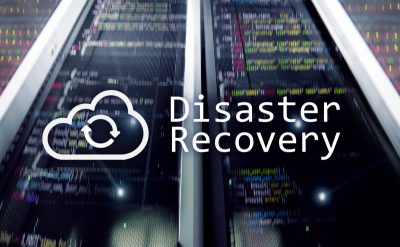Rise of SaaS
Software-as-a-Service (SaaS) is one of the most essential pillars of cloud computing.
We all have seen that in the last few years, SaaS is booming at a rapid pace as several organizations are adopting this business model. Gartner predicted, “By 2020, all new entrants and 80% of historical vendors will offer subscription-based business models, regardless of where the software resides.”
Software integration has changed a great deal in the past ten years, and all the credit goes to cloud technology. It is also termed as cloud-based software, web-based software, on-demand software, or hosted software.
Organizations across the globe are embracing the SaaS philosophy as a substitute for on-premises software and hardware deployment.
What is SaaS?
SaaS is a software distribution model in which service providers host consumers’ applications and make them available to consumers through the internet.
SaaS is one of the three fundamental categories of cloud services, along with Platform-as-a-Service (PaaS) and Infrastructure-as-a-Service (IaaS). The SaaS providers offer a software solution for everything from customer relationship management (CRM), email, and sales management to human resource management, billing, and collaboration.
There are several examples of SaaS models available on the internet, such as Slack, Google Apps, DocuSign, and Dropbox. These software solutions offer employees at companies small and large access to software platforms that are important for everyday operations without worrying about the costs associated with software licensing, hardware management, and infrastructure.
The SaaS industry is going to get bigger and more prominent in the coming years. For instance, as per the Bloomberg report, SaaS will grow at a CAGR of 9% by 2023.
As we have explored SaaS innovations’ key characteristics, it’s time to delve into the top SaaS trends in 2020.
SaaS industry trends that will shine in 2020 as well as in the future are as follows:
1. Migration to Platform-as-a-Service (PaaS)
As the SaaS industry expands and innovation increases, several developers will concentrate on consumer retention on top of consumer acquisition.
In 2020, it is expected to see SaaS migrating toward the realms of PaaS, to empower business and to design custom apps as add-ons to their original services. The likes of Salesforce and Box have introduced PaaS-centric services to hold a substantial industry revenue in their niche. Thus, we expect to see the SaaS trend becoming more prevalent in the coming years.
Here are three significant advantages to put the relevance of this trend into perspective using a PaaS development:
- The enhanced functionality, features, and ability to customize will improve business agility.
- As PaaS offerings are robust and accessible, it will allow you to scale your business more efficiently using PaaS.
- Security is a distinct benefit of the PaaS model.
2. Artificial intelligence (AI)
Self-learning and autonomous variety are some of the most impactful trends in SaaS.
AI is present worldwide and is present in the top three list of Business Intelligence Trends for 2020. AI optimizes business processes, increasing efficiency and productivity while automating repetitive tasks, and supporting human capabilities.
There are several features developed by modern software providers based on AI, such as data alerts. When SaaS is combined with AI capabilities, businesses can obtain better value from their data, enhance security, customize and automate services, and supplement human capacity.
Thus, it will drive AI-based SaaS trends in 2020 and beyond.
3. Vertical SaaS
The third trend that will rule 2020 and beyond is Vertical SaaS. It is entirely customizable and targets clients within specific industries and supply chains, such as modern logistics analytics, healthcare analytics software, or retail analytics.
Why will Vertical SaaS trends have an impact in 2020 and beyond?
The answer to address the question is that Vertical SaaS providers can adapt features as per client demand and industry, thus effectively addressing consumer needs within their niche. Also, its customer acquisition costs are lower in the market.
Vertical SaaS also offers the following benefits:
- It offers higher standard services.
- It plays a vital role in gaining consumer-focused insights.
- Advanced data governance via the inclusion of industry-specific compliance capabilities.
- Pre-defined metrics and KPIs.
- Delivers a higher degree of business value for company performance and operations.
4. Improved thought leadership
One of the most efficient methods to serve the needs of the target audience is via equal inspiration and education measures. Thus, more SaaS providers get into this mentality; we expect thought leadership would become a significant SaaS trend in 2020.
As per the report published by Callbox, it has been observed that about 24% of SaaS businesses publish content to educate or enlighten. Others are solely company focused. Thus, about 11% of the primary players don’t even operate a blog.
SaaS resources are available for start-ups in digestible whitepapers, videos, eBooks, interactive apps, and blog content.
If you want the SaaS trend to blossom in 2020 and beyond, here are two industry thought leaders you should follow:
- Noah Kagan – A leading SaaS expert and a celebrated tech player.
- Mamoon Hamid – A well-respected industry expert and board director on 16 SaaS operations, including Wave HQ and CloudOn.
5. The rising need for API connections
The Application Programming Interface (API) has been a fundamental part of software development for years, and this is what our fifth SaaS trend focuses on.
At first, SaaS providers didn’t have a full integration solution. Thus, failure caused them to disappoint their consumers as a result. Therefore, they would redirect their consumers to a third party to supply the specific APIs, allowing them to integrate the cloud solution into their present system. Consequently, it was better for SaaS developers not to reinvent the wheel, instead of winning some valuable time and funds depending on third-party APIs.
Benoit Lheureux, Vice President of Research Firm Gartner Inc., commented: “Redirecting your customers to a third-party for integration solutions when integration is a requirement in every IT project of substance is falling short of meeting your customer requirements.”
Sum it up…
Peter Thiel, Co-Founder of PayPal, one of the planet’s biggest SaaS providers, commented: “Customers won’t care about any particular technology unless it solves a particular problem in a superior way.”
In the end, we can say that the Software-as-a-Service industry trends train is not slowing down. Thus, this state’s innovative SaaS solutions will only continue to grow in the coming years.
Now that you got a glimpse of the first five vital SaaS trends, I will take you through the remaining five SaaS trends in “Part 2 – 10 Essential SaaS Trends One Should Watch Out for in 2020 and Beyond.” Stay tuned…..
For more such content, download our latest whitepapers on cloud solutions.













![[Things to Know] Before Selecting Cloud Solutions](https://d2qt3hjxf3fk7j.cloudfront.net/wp-content/uploads/2020/02/13083906/Cloud-Solution-400x247.jpg)